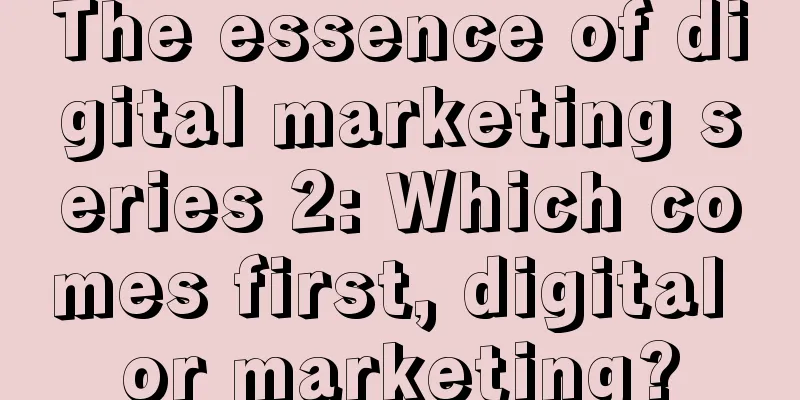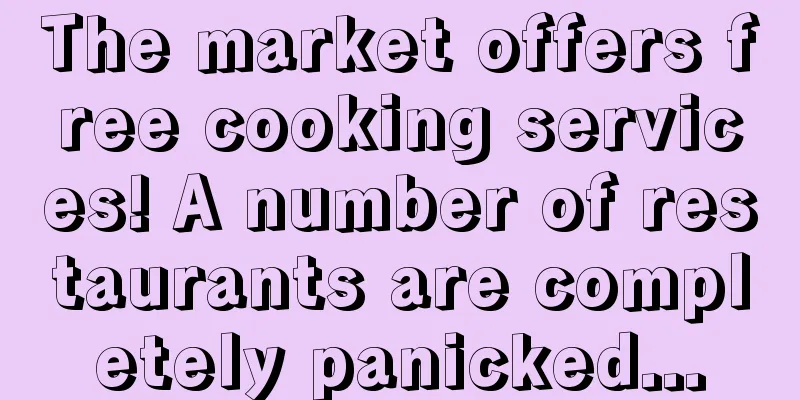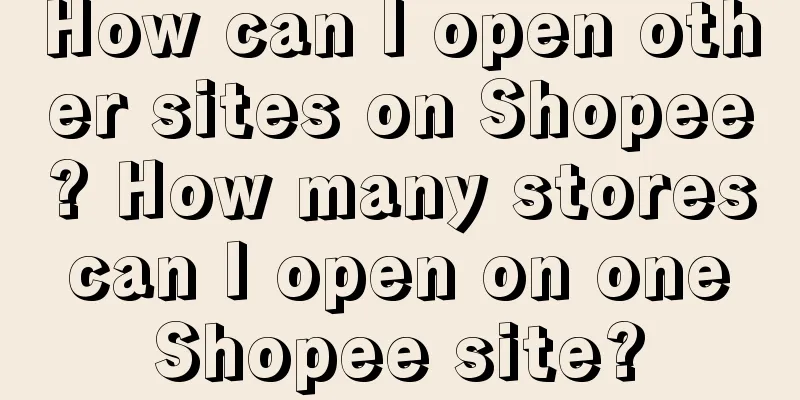Lululemon, L'Oreal, and Adidas all set up stalls. What happened to the big-brand marketing?

BMW Mini's ice cream giveaway at the Shanghai Auto Show went awry, causing its stock price to fluctuate and resulting in huge losses. This is actually a special exception. In fact, people who often attend various exhibitions will find that many brands have chosen not to participate in exhibitions. Doing so can, on the one hand, avoid making uncontrollable mistakes like the BMW MINI did, and on the other hand, save the cost of setting up the booth, because "few of the visitors are real consumers, so why should we spend millions to charm our competitors?" A cosmetics brand marketing manager who declined many invitations from exhibitors this year told New Retail Business Review, "It would be better to use this little money for research and development, or do something more practical." The so-called more practical thing may mean setting up a simple pop-up store in a shopping mall with huge traffic, and giving away white geese, travel cups, frisbees, or even spring bamboo shoots to consumers passing by... "What's the difference between this kind of behavior and health care product brands or insurance sellers setting up a stall at the entrance of a community and giving away eggs and milk to aunts and uncles?" Shanghai internet celebrity "G Sengdong" asked in the video, triggering a barrage of "hahahahahahaha" in the commentary. G Sengdong is right, there is not much difference between the two. According to the observation of New Retail Business Review, this seemingly "simple and crude" marketing promotion activity may be the first choice of brands for a long time in the future. After all, giving gifts or organizing offline activities in a targeted manner according to the characteristics of each target consumer group is the most efficient and direct way for brands with limited funds to communicate with consumers face to face. 1. Marketing expenses"After the beginning of this year, we are obviously busier and poorer - brands want us to spend our limited marketing funds in different ways," Da Bing, an advertising industry practitioner, told New Retail Business Review. "Many brands no longer make long-term, larger-scale, and more beautiful marketing plans, but instead turn to short-term projects with faster returns. They also pay more attention to ROI (return on investment) in terms of investment and are more result-oriented." To put it more bluntly, brands nowadays will do whatever can make money quickly. In this regard, Da Bing sighed heavily. Since March, the small projects that came one after another have overwhelmed her team. On average, each person only had 5 days of rest in a month, and Da Bing herself traveled to 4 cities in a week, becoming a "frequent flyer". Even though they were extremely busy, Da Bing's revenue still shrank. This is because many brands have delayed the pace of launching new products this year, and many projects that were originally ready to go have quietly "fallen out": "Brand owners have no confidence in the market performance of new products, and do not expect them to bring sales growth. They just want to hold on to the position of previous classic products." "Our leaders are also becoming more and more anxious," Da Bing said. And this anxiety is the "chill" transmitted from the brand side. She also found that brands are now gradually shifting their marketing focus from online to offline. In addition, offline activities have also become simpler and more direct. Once upon a time, many big brands paid attention to the pomp and circumstance when doing offline activities, just as "G Sengdong" said in the video: build a fancy big stage, invite a famous band and a few stars to rock the scene, and then invite a bunch of KOLs, KOCs and media to increase exposure and topicality on social media. Such an event can easily cost millions of dollars, but usually not many ordinary consumers participate, so no actual benefits will be generated, it is just for the purpose of attracting attention. This year, no matter how high-end the brands are, they have to "return to basics." They stopped playing incomprehensible brand promotional videos on the big screen, and gave up rolling streaming ads in prominent positions on shopping platforms. Instead, they used the most down-to-earth method - setting up offline platforms to approach consumers, and even "learned" to sell goods on the spot. 2. The true meaning of being down-to-earthThe story begins with the gradual disappearance of the online traffic dividend. Nowadays, consumers have more and more shopping channels, from e-commerce platforms to group buying, mini-programs, and live streaming. At the same time, shopping festivals have also developed from the initial Double 11 to almost every month today - this means that it has become increasingly difficult to attract consumers' attention, and online operating costs are rising. Take Taobao’s through train, which attracts consumers to click through to your store, for example. When calculating the operating costs of e-commerce, Zhihu user “E-commerce Mr. Wu” wrote: “Sometimes, even if you don’t get dozens of orders, you can still burn tens of thousands of dollars in through train advertising fees. And Taobao’s traffic costs are getting more expensive every year, but once you don’t advertise, customers won’t come to your Taobao store.” Faced with the layout and competition of different channels, brands can only "run around in a hurry": "Taobao and JD.com used to make some money, but now there is TikTok... They have lost everything, but the original platforms have to continue working regardless of the consequences." A marketing manager of a fast-moving consumer goods brand told New Retail Business Review. On the other hand, offline, those companies that insist on developing physical stores seem to be doing well. At the "2023 Consumer Product Channel Marketing Innovation Summit" held on April 18, Zhou Xinliang, chairman of Jiangsu Jimailong Supermarket, said: "In the past few years, online business was so popular that many people who originally did offline business wanted to do online business, or to combine online and offline business. But now that so many years have passed, those of us who focused on offline business are actually not dead." He believes that many brands previously focused on "omni-channel" layout, but failed to maximize any channel, and the potential of offline channels with a long history has not been properly explored and utilized. After the fierce competition in the online stock market, many brands have to turn around and look for offline development opportunities again. Chen Ting, sales director of Unilever East China and national ERTM, said that for brands, the offline market still has unique advantages: First, compared to the endless burning of money online, offline investment is more controllable. For example, if Unilever wants to expand its market, it can cooperate with local leading retailers to expand its customer base in the most stable and efficient way. Second, once the offline infrastructure layout is completed, it will be more sustainable. Chen Ting added that unlike online data which is full of uncertainty, the investment in stores will not disappear overnight, and continued investment will definitely pay off. Third, by facing consumers directly, the experience will be more direct. "Many interactive experiences cannot be carried out through the screen," said Chen Ting. Fourth, the gross profit margin is higher and more money can be made. However, although offline shopping is still an important consumption scenario in the post-epidemic era, consumers are now accustomed to online shopping. How can offline stores attract and retain consumers? Chen Ting demonstrated what a down-to-earth approach means: "We will work with retailers to create festivals." Since Unilever has many daily-use brands targeting consumers of different age groups, they chose to attack them one by one. Omo laundry detergent and Zhonghua toothpaste sponsored square dance and mahjong competitions in cities and communities, firmly grasping the middle-aged and elderly consumer groups; Clear shampoo sponsored the offline competition of "Honor of Kings", attracting the target customer group of young men; Jinfang fabric softener sponsored the Hanfu show, attracting the attention of young female consumers; Dove shower gel built a shed covered with ocean balls, making it "impossible for children to walk", thus retaining their parents... Taking Omo Square Dance as an example, more than 200 events were held across the country in 2022, attracting an average of more than 1,200 visitors on competition days; Omo sales in stores during the period increased by 27% year-on-year, and sales of fabric cleaning products increased by 21% year-on-year. "The store's traffic-drawing effect is very good, which has greatly increased Omo's sales. More importantly, it has driven the entire category to continue to grow in this store for a period of time." Chen Ting said. Photo by New Retail Business Review Such activities not only entertain the public, but also attract target customers and sell goods at the same time. The results are gratifying and multiple goals are achieved at one stroke. It truly achieves "getting more returns with an investment of 10,000 or 20,000 yuan." Chen Ting said that these activities seem simple and straightforward, but there are still some tricks involved: "This is not just about in-store promotions, but involves multiple departments from procurement to operations, from stores to markets, and cross-departmental cooperation. It also requires close cooperation with local properties and retailers, so it must be led by CEO-level managers and fully promoted; we must also persuade and promote retailers to invest with us; at the same time, we must learn the online activity system, build and invest resources of different levels to support it..." For these reasons, such projects should be refined rather than numerous. In addition, offline activities also pose certain challenges to the brand, the degree of digitalization of channels, and the warehousing and logistics system. It is necessary to respond to the needs of the event site as quickly as possible. All these hard work is hidden behind the success. It should be emphasized that Unilever's products are mostly daily chemical products, which are closely related to people's daily lives. Therefore, they are more suitable for such direct offline marketing activities and can also achieve good results. In other words, not everyone can learn or do this method well. Brand owners still need to carefully consider the form of offline activities based on multiple dimensions such as their brand tone, product categories, channel characteristics, and warehousing and logistics capabilities. There are many more interesting examples. In early April this year, Adidas held an offline event for the Shanghai Half Marathon with the theme of "Shanghai Freshness", giving spring bamboo shoots to passers-by. Image source: adidas Weibo In mid-April, L’Oréal launched an event called “L’Oréal Whitening Clinic·Binjiang Limited Time Experience Space” in Shanghai Xuhui Binjiang, setting up an exhibition hall similar to a pop-up store and giving away frisbees and skateboards. At the L'Oréal China "Beauty Without Boundaries, New Singularity - 2023 Development Strategy Annual Communication Conference" held at the same time, Ma Xiaoyu, Vice President of L'Oréal China and General Manager of the High-end Cosmetics Division, said: "Offline customer traffic is back!" Image source: L'Oréal Paris Weibo In addition, lululemon's flagship store opened, and it held a "pop-up fitting room" event, where visitors could get a blind box of its flagship Align series when they tried on clothes; Hennessy gave away travel mugs when they checked in at the entrance of Plaza 66... On the one hand, these marketing events captured the attention of the onlookers at the scene, and on the other hand, they also sparked a lot of discussion on social media. For the brands, these activities are generally very profitable. After the epidemic, consumers have become more rational, and so have brands, and they need to spend money more wisely. The ground promotion and roadshow activities that were once despised are once again taken seriously by brands, and the logic behind them has become clearer: whether it is directly sending gifts, sponsoring events, or creating festivals, brands are creating an opportunity and environment to communicate with consumers face to face. Ultimately, the ultimate goal of marketing is to establish a more practical and closer relationship with each specific consumer. Author: Qian Luoying; Editor: Ge Weiwei Original title: lululemon, L’Oreal, and Adidas all set up stalls, are big brands collectively giving up on marketing? Source public account: New Retail Business Review (ID: xinlingshou1001); using in-depth cases and cutting-edge viewpoints, we will explore the 1001 possibilities of new retail with you. |
<<: What can we learn from Heinz copywriting?
Recommend
Different marketing strategies for products of the same category on Xiaohongshu result in a production efficiency difference of nearly 10 times?
Different strategies for the same category of prod...
Consumer Creators Are Rising
Today's consumers have begun to pay attention ...
How cunning is YouTube in its fight for TV advertising dollars?
Recently, YouTube has launched an activity to laun...
Can I change the site if Shopee fails the review? Is it useful?
Shopee is now a very popular platform. If many mer...
Where can I check Amazon's exposure rate? What does exposure mean?
Amazon, as a cross-border e-commerce platform, can...
Can Shopee directly ship to mainland China? Can it ship to mainland China?
If users want to shop on Shopee, they need to regi...
How many days does it take for Amazon to prepare goods? What are the advantages of self-delivery?
On the Amazon platform, Amazon merchants need to d...
What are the requirements for opening a store on Amazon? What should I pay attention to?
As cross-border e-commerce platforms continue to g...
AI investment makes entrepreneurs sad
As AI tools become more popular, how to attract an...
Without pre-sales, what’s the point of 618?
This year's 618, Taobao and other platforms ha...
Amazon One-Click Listing Global FAQ Sharing
Recently, Amazon launched a new feature called One...
How much does THC cost? Introduction to the cost standards
We do cross-border business. If we want to transpo...
How to be a shein agent? Can shein make money?
Shein, as the world's leading fast fashion bra...
What are the top ten cross-border e-commerce platforms? Share the top ten cross-border e-commerce platforms
The rapid development of cross-border e-commerce h...
The economics behind Black Myth: Wukong
As a highly anticipated domestic 3A game, Black My...









